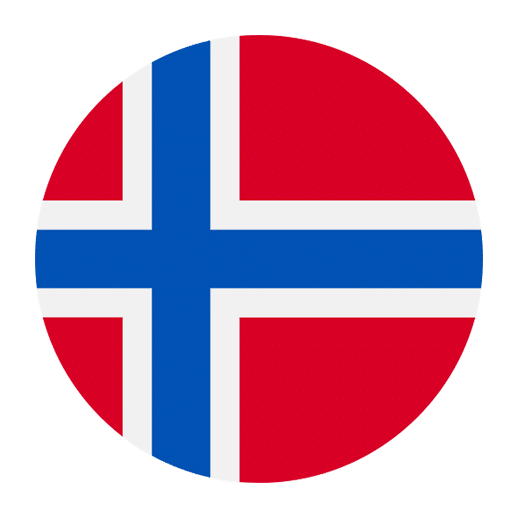When learning a new language, one of the most practical areas to focus on is vocabulary related to clothing and fabrics. These words are essential for everyday conversations, shopping, traveling, and understanding cultural contexts. In this article, we will explore an extensive list of Norwegian words for clothing and fabrics, providing you with the vocabulary you need to navigate these topics confidently in Norwegian.
Basic Clothing Items
Let’s start with the basics. These are the everyday clothing items that you are likely to encounter frequently.
– **Bukser** – Pants or trousers
– **Skjørt** – Skirt
– **Kjole** – Dress
– **Skjorte** – Shirt
– **Genser** – Sweater or jumper
– **Jakke** – Jacket
– **Kåpe** – Coat (typically a woman’s coat)
– **Frakk** – Overcoat (typically a man’s coat)
– **T-skjorte** – T-shirt
– **Buksedress** – Jumpsuit
– **Shorts** – Shorts
– **Drakt** – Suit (typically a woman’s suit)
– **Dress** – Suit (typically a man’s suit)
– **Bluse** – Blouse
– **Underbukse** – Underpants
– **BH** – Bra
Footwear
Footwear is just as essential as clothing, and knowing these words will help you when shopping or packing for a trip.
– **Sko** – Shoes
– **Støvler** – Boots
– **Sandaler** – Sandals
– **Joggesko** – Sneakers
– **Høyhælte sko** – High-heeled shoes
– **Tøfler** – Slippers
– **Ballerinasko** – Ballet flats
– **Flip-flops** – Flip-flops
– **Gummistøvler** – Rubber boots
– **Løpesko** – Running shoes
Accessories
Accessories are often the finishing touches to an outfit. Here are some common Norwegian words for accessories.
– **Belte** – Belt
– **Hatt** – Hat
– **Lue** – Beanie or wool hat
– **Caps** – Cap
– **Hansker** – Gloves
– **Skjerf** – Scarf
– **Veske** – Bag or purse
– **Ryggsekk** – Backpack
– **Solbriller** – Sunglasses
– **Klokke** – Watch
– **Smykker** – Jewelry
– **Øredobber** – Earrings
– **Halskjede** – Necklace
– **Armbånd** – Bracelet
Outerwear
In Norway, outerwear is particularly important given the country’s cold climate. Here are some words you should know.
– **Regnjakke** – Raincoat
– **Vindjakke** – Windbreaker
– **Fleecejakke** – Fleece jacket
– **Parkas** – Parka
– **Snøjakke** – Snow jacket
– **Anorakk** – Anorak
– **Vest** – Vest
Specialty Clothing
These are items you might not wear every day but are good to know for specific activities or occasions.
– **Badedrakt** – Swimsuit (for women)
– **Badebukse** – Swim trunks (for men)
– **Pysjamas** – Pajamas
– **Treningstøy** – Workout clothes
– **Arbeidsklær** – Work clothes
– **Uniform** – Uniform
– **Selskapskjole** – Evening gown
– **Brudekjole** – Wedding dress
– **Nattkjole** – Nightgown
Fabrics and Materials
Understanding different fabrics and materials can help you make better choices when shopping for clothes or discussing textiles.
– **Bomull** – Cotton
– **Ull** – Wool
– **Silke** – Silk
– **Lin** – Linen
– **Polyester** – Polyester
– **Nylon** – Nylon
– **Skinn** – Leather
– **Semsket skinn** – Suede
– **Denim** – Denim
– **Kordfløyel** – Corduroy
– **Kasjmir** – Cashmere
– **Fløyel** – Velvet
– **Syntetisk** – Synthetic
– **Tekstil** – Textile
– **Materiale** – Material
Colors and Patterns
Describing clothing often involves mentioning colors and patterns. Here are some useful terms.
– **Farger** – Colors
– **Rød** – Red
– **Blå** – Blue
– **Grønn** – Green
– **Gul** – Yellow
– **Svart** – Black
– **Hvit** – White
– **Grå** – Gray
– **Rosa** – Pink
– **Lilla** – Purple
– **Brun** – Brown
– **Mønstre** – Patterns
– **Stripete** – Striped
– **Rutete** – Checkered
– **Prikkete** – Polka-dotted
– **Blomstret** – Floral
– **Ensfarvet** – Solid color
– **Kamuflasje** – Camouflage
Useful Phrases for Shopping
When you’re out shopping for clothes, these phrases can be incredibly helpful.
– **Kan jeg prøve denne?** – Can I try this on?
– **Har dere denne i en annen størrelse?** – Do you have this in another size?
– **Hvor mye koster denne?** – How much does this cost?
– **Er det på salg?** – Is it on sale?
– **Jeg ser etter en jakke.** – I am looking for a jacket.
– **Hvor er prøverommene?** – Where are the fitting rooms?
– **Har dere denne i en annen farge?** – Do you have this in another color?
– **Det er for stort/smått.** – It is too big/small.
– **Jeg tar den.** – I’ll take it.
– **Kan jeg få kvitteringen?** – Can I get the receipt?
Describing Clothing in Norwegian
To describe clothes more specifically, you can use adjectives along with the nouns. Here are some examples:
– **En lang kjole** – A long dress
– **En kort jakke** – A short jacket
– **En rød skjorte** – A red shirt
– **En stripete genser** – A striped sweater
– **En svart bukse** – A black pair of pants
Remember, in Norwegian, adjectives usually agree in gender and number with the nouns they describe.
Understanding Norwegian Clothing Sizes
Norwegian clothing sizes can be different from those in other countries. Here’s a brief guide to help you.
– **Dameklær (Women’s clothing)**:
– Sizes are typically in European format (e.g., 34, 36, 38, etc.).
– Small (S), Medium (M), Large (L), Extra Large (XL) are also used.
– **Herreklær (Men’s clothing)**:
– Sizes are also in European format (e.g., 48, 50, 52, etc.).
– Standard sizes like Small (S), Medium (M), Large (L), Extra Large (XL) are common.
– **Skostørrelser (Shoe sizes)**:
– European shoe sizes are used (e.g., 38, 39, 40, etc.).
– It’s useful to know your European shoe size when shopping in Norway.
Seasonal Clothing
Norway has distinct seasons, and the type of clothing you’ll need can vary greatly.
– **Vinterklær (Winter clothes)**:
– **Vinterjakke** – Winter jacket
– **Ullgenser** – Wool sweater
– **Vinterstøvler** – Winter boots
– **Vinterlue** – Winter hat
– **Sommerklær (Summer clothes)**:
– **Sommerkjole** – Summer dress
– **Shorts** – Shorts
– **T-skjorte** – T-shirt
– **Sandaler** – Sandals
– **Høstklær (Autumn clothes)**:
– **Regnjakke** – Raincoat
– **Gummistøvler** – Rubber boots
– **Genser** – Sweater
– **Vårklær (Spring clothes)**:
– **Lett jakke** – Light jacket
– **Sneakers** – Sneakers
– **Bukser** – Pants
Cultural Insights
Understanding Norwegian culture can also help you make better choices when it comes to clothing.
– **Traditional Clothing**: Norway has a rich tradition of folk costumes known as **bunad**. These are often worn for special occasions like weddings, national holidays (e.g., Constitution Day on May 17), and other cultural events.
– **Weather Considerations**: Given Norway’s often cold and wet climate, Norwegians prioritize functional and weather-appropriate clothing. Waterproof and windproof items are common.
– **Sustainability**: There is a growing emphasis on sustainable fashion in Norway. Many people are conscious about buying environmentally friendly and ethically produced clothing.
Conclusion
Mastering the vocabulary for clothing and fabrics in Norwegian is a significant step towards fluency. It not only helps you in practical situations like shopping and dressing appropriately for the weather but also gives you deeper insights into Norwegian culture and daily life. Whether you’re planning a trip to Norway, interacting with Norwegian speakers, or simply broadening your language skills, this guide will be a valuable resource. Happy learning!

